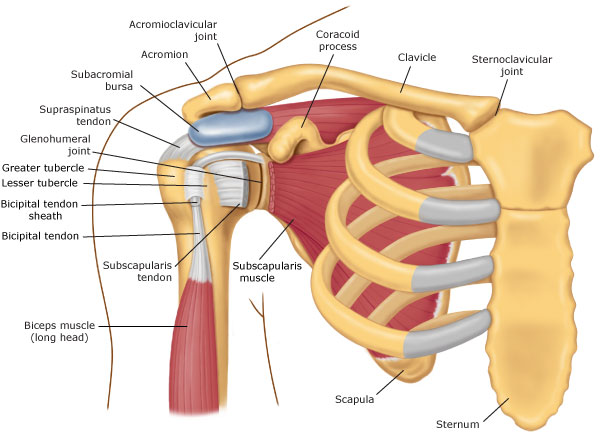 The shoulder is made up of three bones: the clavicle (collarbone), the scapula (shoulder blade), and the humerus (upper arm bone) as well as associated muscles, ligaments and tendons. The articulations between the bones of the shoulder make up the shoulder joints. The joint cavity is cushioned by articular cartilage covering the head of the humerus and face of the glenoid. The scapula extends up and around the shoulder joint at the rear to form a roof, called the acromion, and around the shoulder joint at the front to form the coracoid process.
The shoulder is made up of three bones: the clavicle (collarbone), the scapula (shoulder blade), and the humerus (upper arm bone) as well as associated muscles, ligaments and tendons. The articulations between the bones of the shoulder make up the shoulder joints. The joint cavity is cushioned by articular cartilage covering the head of the humerus and face of the glenoid. The scapula extends up and around the shoulder joint at the rear to form a roof, called the acromion, and around the shoulder joint at the front to form the coracoid process.
Ligaments connect the bones of the shoulder, and tendons join the bones to surrounding muscles. The biceps tendon attaches the biceps muscle to the shoulder and helps to stabilize. Four short muscles originate on the scapula and pass around the shoulder where their tendons fuse together to form the rotator cuff.
All of these components of the shoulder, along with the muscles of the upper body, work together to manage the stress the shoulder receive as you extend, flex, lift, and throw.
